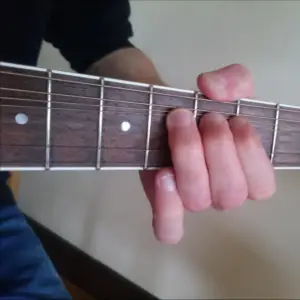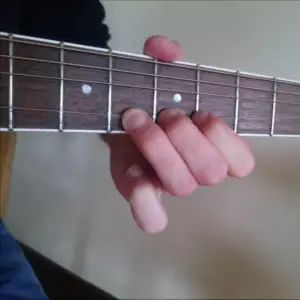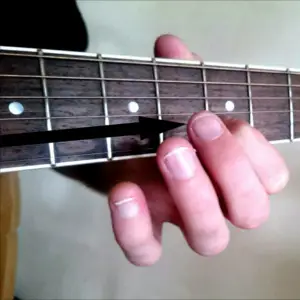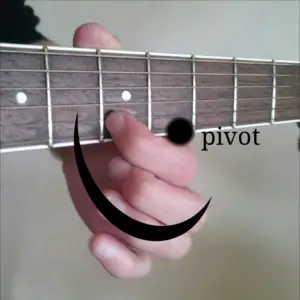Techniques
Bending – stretching a string vertically downwards or upwards to raise the pitch. An effective way to create blue notes.
Half bend: bending so that the pitch is raised by a 1/2 tone (sounding like the next fret).
If you do a half bend on the 5. fret, the pitch will be like a normal tone played on the 6. fret.
Full bend: bending so that the pitch is raised by 1 tone (sounding like 2 frets up).
For example: If you do a full bend on the 5. Fret, the pitch will be like a tone played on the 7. Fret.


As you see, all three fingers have contact with the string to make it easier to bend it.
With only one finger, you have to use more force to bend it the same amount.
Sliding – sliding your finger horizontally up or down the fretboard.
You can slide as many frets as you want, according to what sound you want.
Start with playing a note while slowly moving your hand downwards or upwards.

Vibrato – bending the string up and down in a fast motion to create a vibrating pitch.
There is several ways of doing this, and it can be done with all the fingers.
Try to start with the method on the picture, pivoting the whole hand.

Using these techniques can make your phrases sound more alive and soulful.
A good way to practice them is to listen to a blues record, try to understand how the guitarists use these techniques and try to imitate them.
Limit yourself to practice one at a time.
Some of the bends works better on some tones in the scale than on other tones. For example, try bending on all the notes in the scale, and see which ones you think sounds best.